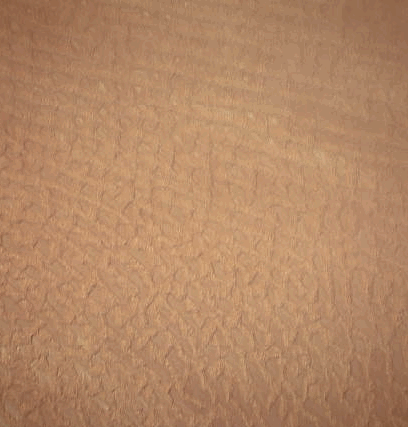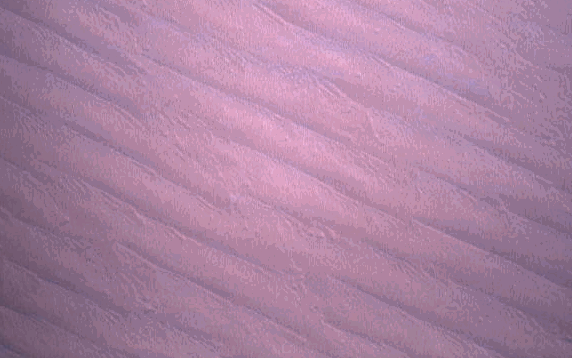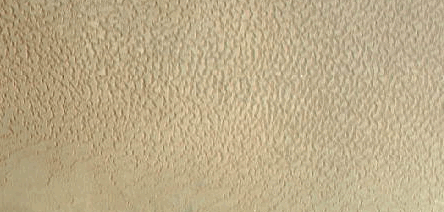
Saharan linear dunes (top right) and dune networks (lower center). All three photographs were taken by Space Shuttle astronauts.

Regularly-spaced linear dunes in Ar'Rub Al-Khali (the Empty Quarter).

The Ash Shaiba barchan field, Ar'Rub Al-Khali.
Dunes
|
|
|
A dune is defined a body of
coarse sand shaped by ambient wind conditions and the grain-by-grain deflation of sand. Standing as much as 400 meters high (the tallest reported), with a lower height limit around 30 cm, dunes are typically between 1 m and 1 km wide. Quartz is the most common type of sand material, although dunes can be composed of sand-sized carbonates, clays, salts, or even ice. Locally-common carbonate sand may eventually cohere in sedimentary layers termed aeolianite. Dunes are generally mobile, but may anchor to topographic obstacles or vegetation. Anchored dunes do not change position, but their surfaces are mobile; stabilized dunes are immobilized by cementation or vegetation after they have formed, and consequently their surfaces are immobile and the dunes themselves do not change position.How dunes first form on a level, firm surface, and then replicate, are issues that remain unclear.
Formation of an initial dune is thought to be the consequence of one of the following:Replication
of dunes is now believed to result from organized turbulence, but the evidence is weaker for mesoscale dunes than for megascale ones. Megascale dunes seem to organize in patterns both parallel and transverse to windflow. Mesoscale dune wavelength is sometimes strongly correlated with sand grain size. Topographic obstacles are also known to generate wavelike atmospheric motions in their lee, and the formation of these lee-wave dunes is well documented.Movement
is the natural state of all unanchored, unstabilized transverse dunes. Small dunes move more rapidly than do large ones, and movement of a meter per day may be common during a region's windy season. Dunes may be ephemeral, reaching 1 m or more in height in a few hours if winds are sufficiently strong, only to vanish as quickly if the wind direction changes. Other ephemeral dunes persist over daily or seasonal timescales. Larger dunes are able to withstand minor seasonal or even interannual changes in the wind regime, retaining their shape for 25 to 30 years. Variations in windspeed and direction leave complex sequences of size- or mass-sorted sand grains for both stationary and mobile dunes.The immense diversity of dunes arises from near-infinite variations in the intensity, sequence, and combination of dune-forming processes, including the intensity and direction of diurnal, seasonal, and annual winds, patterns of wind turbulence, sediment size and supply, the presence of vegetation cover and plant shape, overall topography at different spatial scales, rainfall and hydraulic erosion, and recent geologic history. Nevertheless, dunes have broadly been classified. The common dune types are the following.
Some areas of the Earth are covered by
sandsheets, the largest of which is the 100,000 km2 Selima sandsheet in the Sahara. Characterized by a marked absence of dunes, on the ground sandsheets appear to be nearly featureless, level plains. While not resulting in dunes, the surface material of some of these sandsheets is unquestionably mobile. Sandsheets are believed to form under different conditions, the most important of which is material coarseness (the mean size of the Selima sandsheets mobile grains is 1.5 mm). Desert-margin sandsheets occur adjacent to vegetation, which curtails sand movement and dune growth. In some areas, a near-surface water table or periodic flooding discourages the growth of dunes. Finally, some sandsheets are erosional remnants of dunes.References
This site last updated on October 6, 1998.